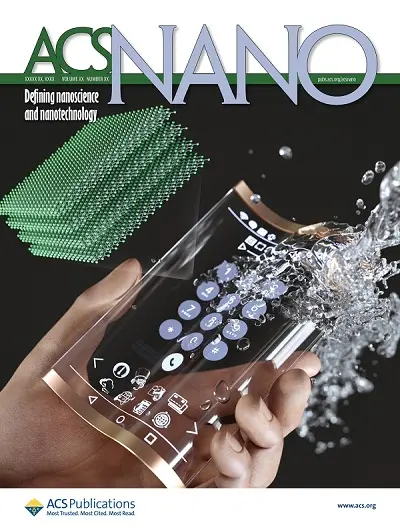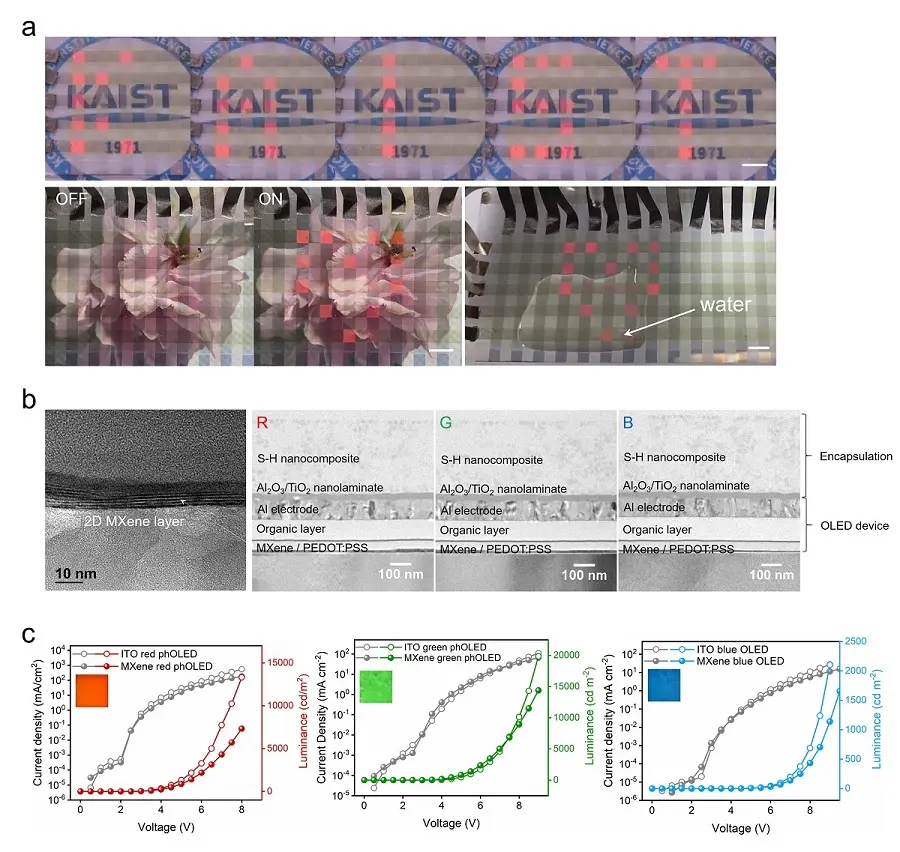A novel solution addressing the fragility of transparent flexible displays has been announced by the Korea advanced institute of science and technology (KAIST).

The researchers have leveraged MXene nanotechnology to develop transparent, flexible OLEDs that maintain luminosity even when exposed to water. This achievement addresses a longstanding issue in the use of MXene, a conductive material known for its high electrical conductivity and transparency but previously limited in applications due to its susceptibility to degradation when exposed to moisture or water.
MXene is a type of two-dimensional (2D) material, similar to graphene. They are typically composed of early transition metals (such as titanium or molybdenum) and carbon or nitrogen. There have been challenges to overcome for MXenes, mainly associated with their environmental stability (e.g., sensitivity to air and moisture) and scalability of production. This research has significance as a step in addressing some of these challenges.
The team developed a strategy to encapsulate the MXene, preventing oxidation by moisture or oxygen. They first analyzed the mechanism of electrical degradation of MXene due to moisture, then designed a double-layer encapsulation film that not only blocks moisture but also offsets residual stress to maintain flexibility. To top it off, a thin plastic film of tens of micrometers in thickness was attached to make the OLED washable and water-resistant.
The team developed red, green, and blue MXene-based OLEDs capable of emitting a brightness of over 1,000 cd/m2, enough to be perceived under sunlight. The red MXene-based OLED demonstrated a lifespan of 2,000 hours in standby (maintaining 70% of its luminosity) and 1,500 hours of operation (maintaining 60% of its luminosity). It also showed durability by withstanding over 1,000 flexes at a low curvature radius of 1.5mm. The performance was maintained (80% luminosity retention) even after being submerged in water for 6 hours.

The researchers also demonstrated a transparent display capable of showing characters or shapes by using patterning technology to create a passive-matrix display out of the MXene-based OLEDs.
Reference
Jeong, S. Y., Jeon, Y., Kim, E., Lee, G., Oh, Y. W., Ahn, C. W., … & Choi, K. C. (2023). Highly Air-Stable, Flexible, and Water-Resistive 2D Titanium Carbide MXene-Based RGB Organic Light-Emitting Diode Displays for Transparent Free-Form Electronics. ACS nano. https://doi.org/10.1021/acsnano.3c00781

